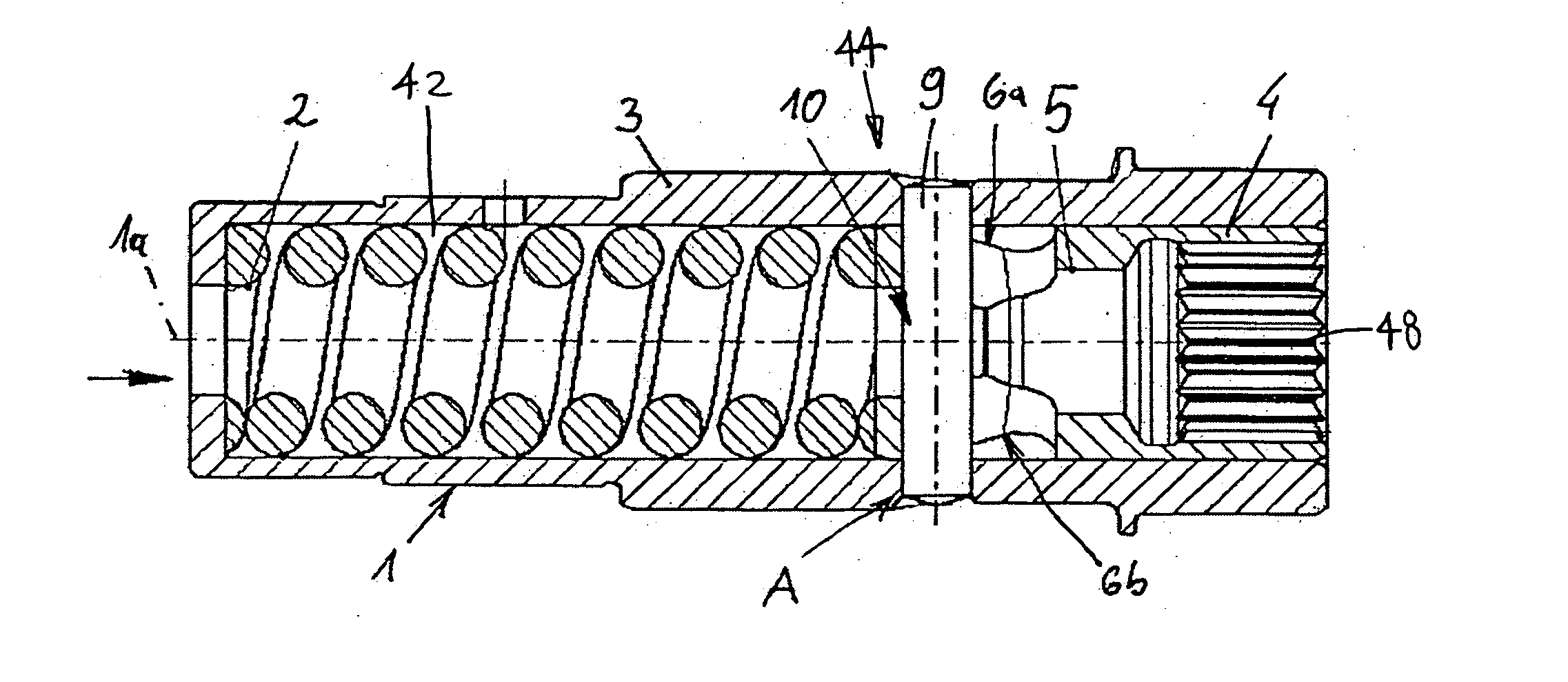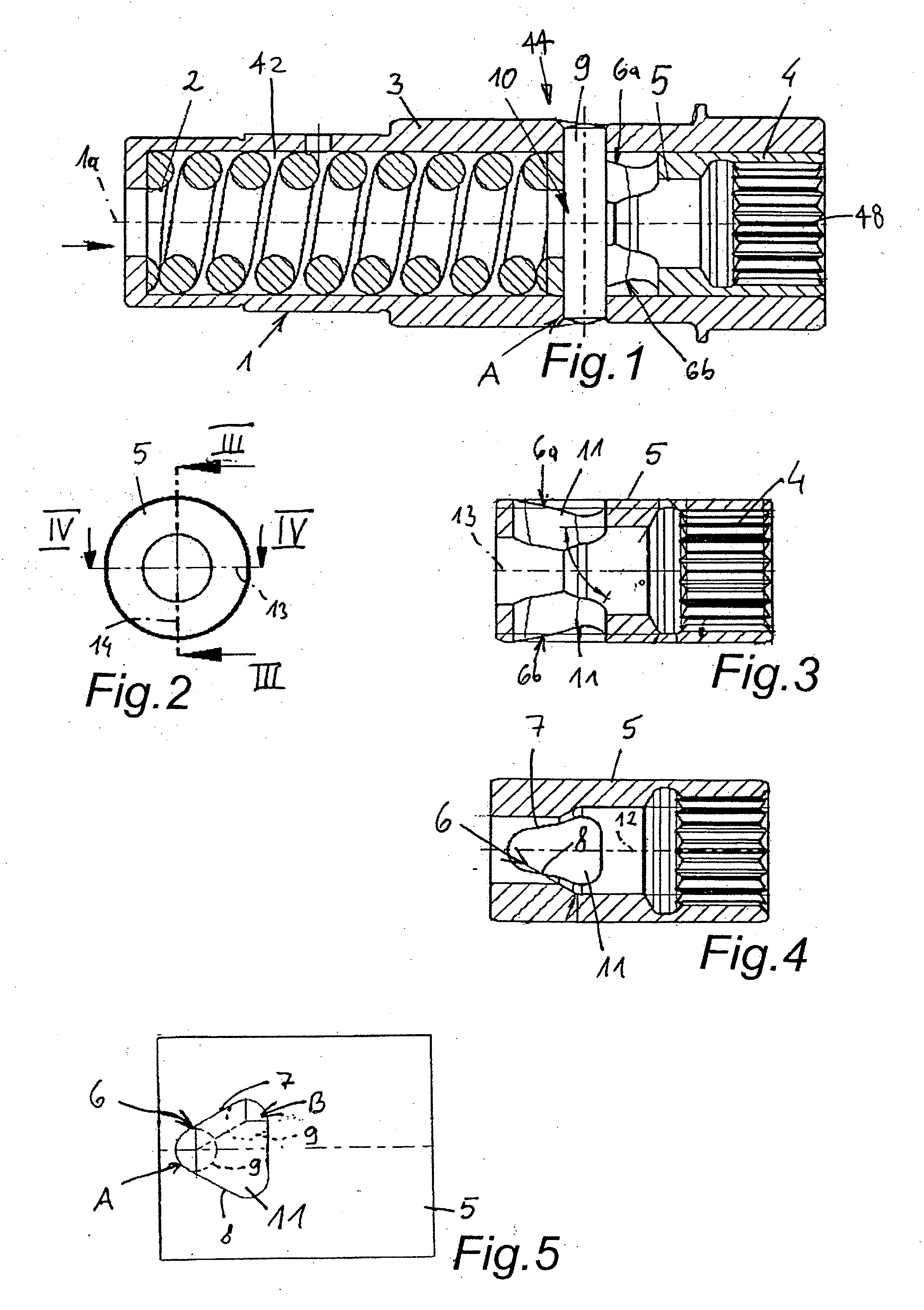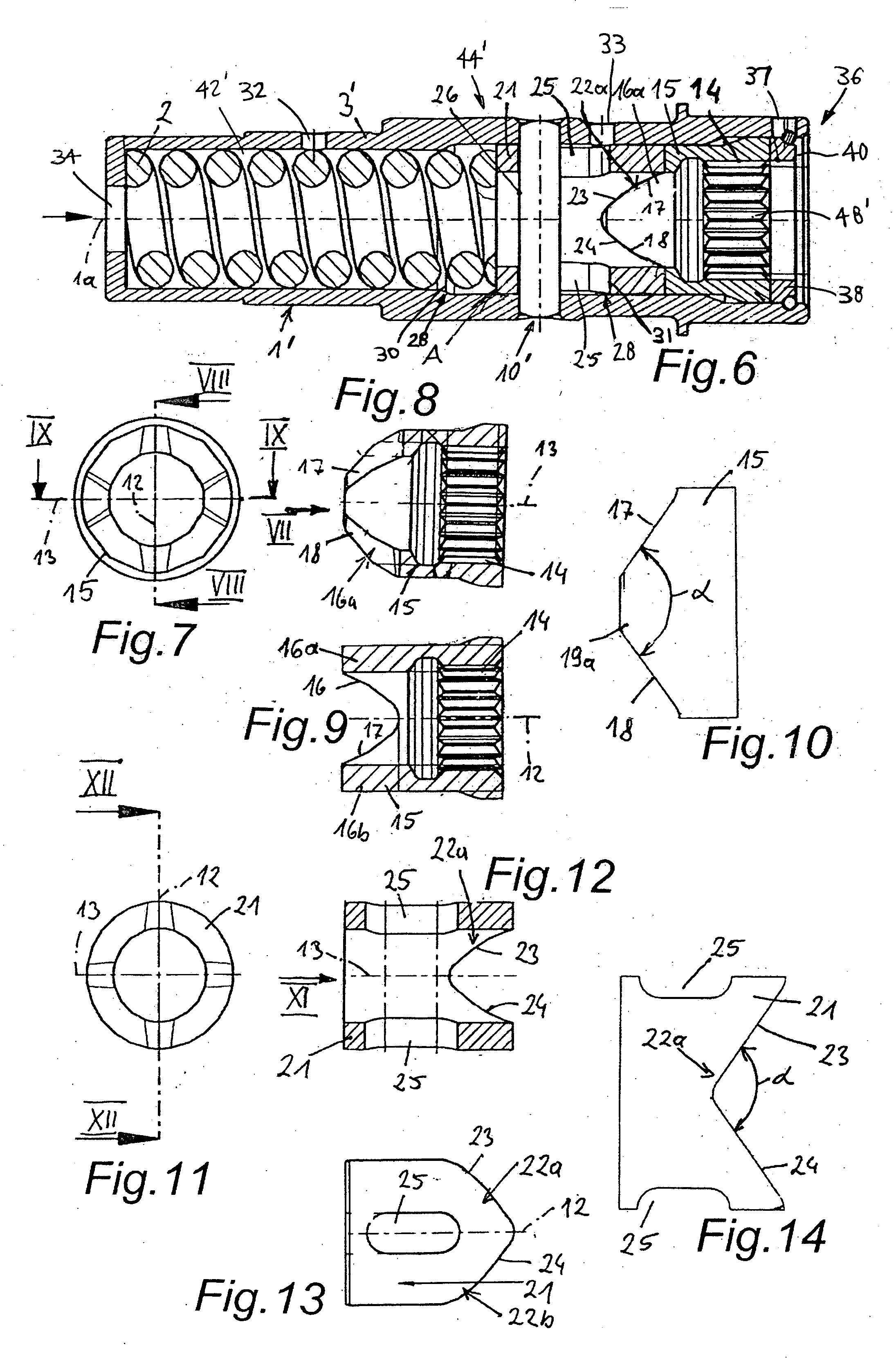Vibration decoupler
a technology of vibration decoupler and damper, which is applied in the direction of spring/damper design characteristics, couplings, mechanical equipment, etc., can solve the problems of occupying a relatively large installed space in the engine, requiring a relatively large number of component parts, and limited reduction of torsional vibration, so as to reduce torsional vibration and occupy a small space. , the effect of simple construction
- Summary
- Abstract
- Description
- Claims
- Application Information
AI Technical Summary
Benefits of technology
Problems solved by technology
Method used
Image
Examples
first embodiment
[0051] In the invention that is shown in FIGS. 1-5, the first ramp 7 and the second ramp 8 are formed by a hole 11 in the ramp body 5. The hole 11 is essentially shaped as an isosceles triangle, as can be seen in FIGS. 4-5. The ramp body 5 is loaded in the axial direction by the resilient member 2.
[0052] A pressure body 10 that is formed by a press pin 9 is connected rigidly with the first connector 3. As illustrated, the press pin 9 is transverse to the axis 1a of the torsional-vibration damper 1. The press pin 9 passes through the hole 11 in the ramp body 5, and is of a cross section that is essentially smaller than the cross section of the hole 11.
[0053] When forces are transferred uniformly, the press pin 9 is in the stable position A that is shown in FIG. 5. When in the stable position A, rotary movement is transmitted between the first connector 3 and the second connector 4 through the press pin 9 and the ramps 7, 8. Should the magnitude of the torque spike deviate from a unif...
second embodiment
[0057] FIGS. 6-14 show a torsional-vibration damper 1'. The torsional-vibration damper 1' includes a first connector 3' and a second connector 14. This embodiment differs from the embodiment shown in FIGS. 1-5 in that a ramp unit 44' also includes a second ramp body 21, in addition to the resilient member 2 and a first ramp body 15. The first ramp body 15 essentially forms a dog clutch with the second ramp body 21. The resilient member 2 presses the second ramp body 21 against the first ramp body 15 in the axial direction.
[0058] In the embodiment illustrated in FIGS. 6-14, the first ramp body 15 has two pairs of surfaces 16a, 16b, each with a first ramp 17 and a second ramp 18. The first ramp 17 and the second ramp 18 are formed so as to be wedge-shaped to each other. The first and second ramps 17, 18 subtend an angle .alpha. of approximately 110.degree. in the developed view of the embodiment shown in FIG. 10. As discussed above, however, a wider range of angular arrangements is co...
PUM
 Login to View More
Login to View More Abstract
Description
Claims
Application Information
 Login to View More
Login to View More - R&D
- Intellectual Property
- Life Sciences
- Materials
- Tech Scout
- Unparalleled Data Quality
- Higher Quality Content
- 60% Fewer Hallucinations
Browse by: Latest US Patents, China's latest patents, Technical Efficacy Thesaurus, Application Domain, Technology Topic, Popular Technical Reports.
© 2025 PatSnap. All rights reserved.Legal|Privacy policy|Modern Slavery Act Transparency Statement|Sitemap|About US| Contact US: help@patsnap.com



